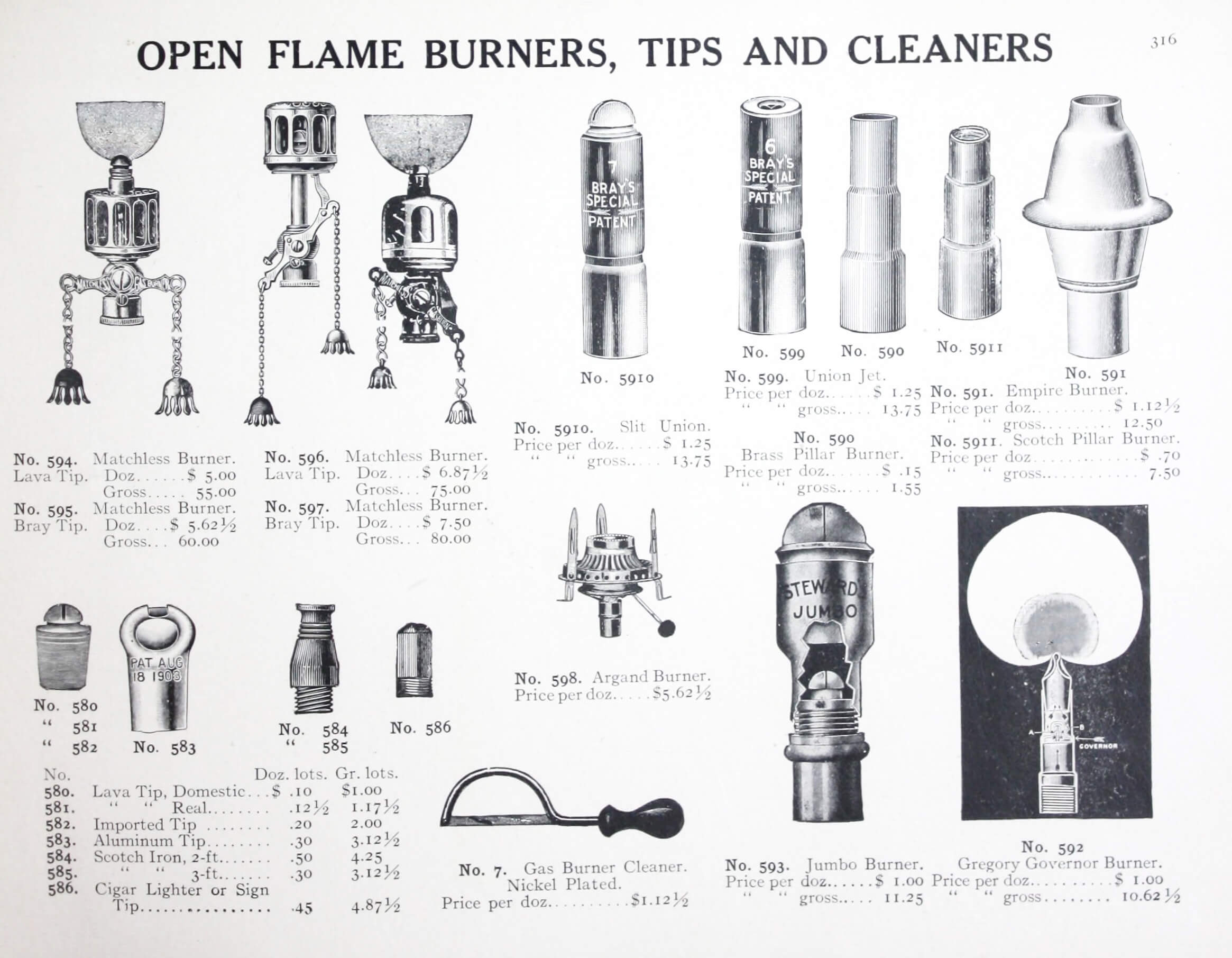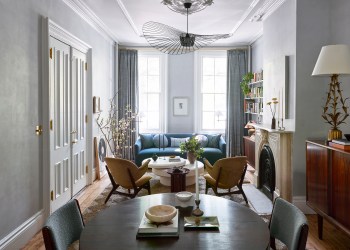Lighting in the 19th Century Row House
The old light fixtures we see so often in Brooklyn townhouses that we think are original to the building are quite often early electric lights or mid 20th century chandeliers.

A domestic scene with a hanging oil lamp, depicted by an unknown artist in ‘Waiting for Papa,’ circa 1876. Image via Library of Congress
The old light fixtures we see so often in Brooklyn townhouses that we think are original to the building are quite often early electric lights or mid 20th century chandeliers.
“It is rare to find pre-electric lighting in situ,” writes Roger Moss in “Lighting for Historic Buildings,” because it was “easier to replace outdated fixtures than to convert them.” Many were removed and later melted down for war scrap-metal drives.

When we first saw the house where we now live, it had hardly any electric lights or outlets — fewer than one per room. Bare bulbs hung down on chains. It had a certain creepy old-house appeal.
More research revealed the 1890s house had been wired for electricity in the early years of the 20th century. Originally, the house was lit by gas fixtures — and not many of them. When electricity arrived, the gas pipes were capped and left in place.
In Brooklyn houses, one occasionally comes across old salvage light fixtures added by later occupants. Truly original gas lights are more rare, although 1234 Dean Street in Crown Heights is one example of a brownstone that has several.

In the first half of the 19th century, whale oil was a prized alternative to candles, and kerosene became popular after the Civil War. Gas lighting was introduced in the early 19th century and came into widespread use in homes in the 1880s. Edison perfected the lightbulb in 1879, and electric lighting became the norm throughout the U.S. in the 1930s.
While lighting technology changed dramatically over the course of 100 years, and decorative details of fixtures reflected the styles of their eras, types of fixtures have remained remarkably consistent. You can learn a lot by browsing the online store of a knowledgeable antique lighting dealer, and some of the pieces exhibit beautiful metalwork.
In the 19th century, a lantern suspended from the ceiling was common in the hall on the parlor level. In the whale oil era, it might be suspended on an adjustable chain. In the gaslight era, it hung from a pipe. Covered sides helped protect the flame from gusts of wind.

In the late 19th century, large rooms such as parlors and bedrooms typically had one large gasolier in the ceiling in the middle of the room, with the pipe coming down from the middle of the plaster medallion, which helped camouflage soot from flames.
But regardless of what type of fixtures were used, well into the 1920s, even when illuminated by electric bulbs, homes were dimly lit by contemporary standards. Candles, flames and early bulbs gave off less light than modern bulbs, and homes had fewer fixtures. A single gas flame gave off relatively little light — about the equivalent of 8 watts.

In the 1890s, our long, dark hallway on the garden floor was lit only by two gas sconces, one at each end. Surprisingly, some Brooklyn houses of the era were equipped with an electric switch to turn on gas-fed fixtures at entries, not unlike electric ignition on stoves today. Our kitchen was illuminated by just one fixture, a J hook hung next to the chimney over the sink; kerosene lamps would have been used for task lighting.
Sconces in halls, pantries and bathrooms were relatively simple and utilitarian, perhaps with a scroll or a plain pipe resembling a candle, like the “upright gas arms” sold by Welsbach pictured above. Windows onto air shafts and doors with frosted glass panes helped, at least in theory, to illuminate late 19th century bathrooms.

In many Brooklyn homes the gas pipes are still active even though they are capped and not in use. In the 19th century, the gas that flowed through them was made from coal; it was not natural gas. The exterior gas lamps that still flicker in people’s yards today all over Brooklyn were installed in the 1970s and ‘80s as part of Brooklyn Union Gas’s Cinderella Project to rehabilitate historic homes.
Editor’s note: A version of this story appeared in the Spring/Summer 2019 issue of Brownstoner magazine.
Related Stories
- 10 Tips for Restoring a Wood Frame House in Brooklyn
- How to Clean a Marble Mantel
- Designer Malene Barnett Goes Full Spectrum With Color in Her Bed Stuy House
Email tips@brownstoner.com with further comments, questions or tips. Follow Brownstoner on Twitter and Instagram, and like us on Facebook.









What's Your Take? Leave a Comment